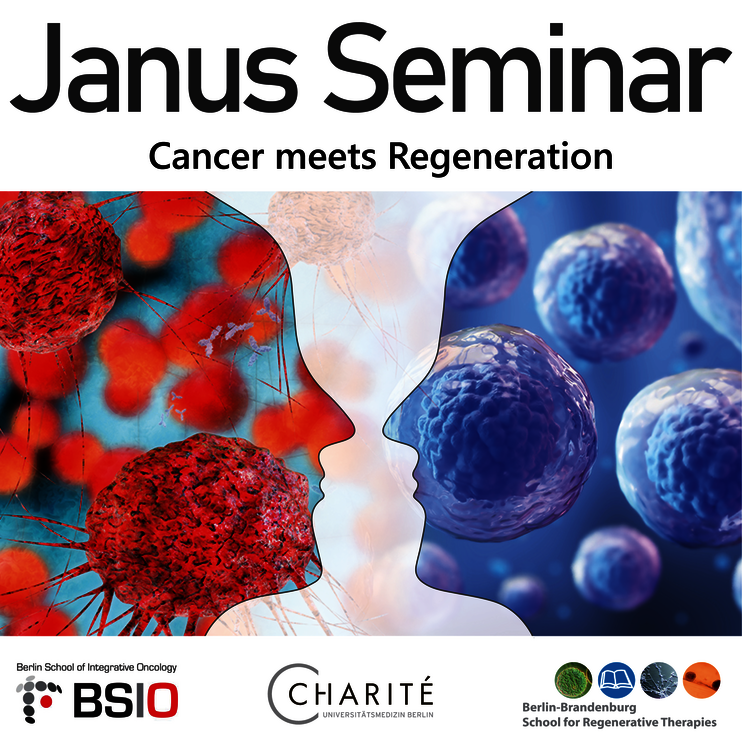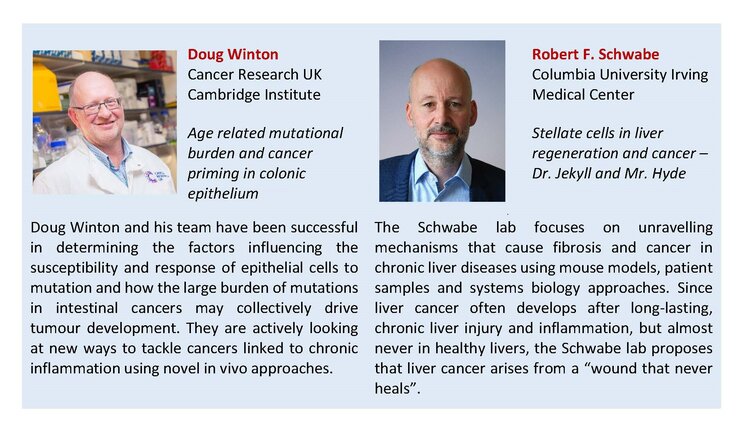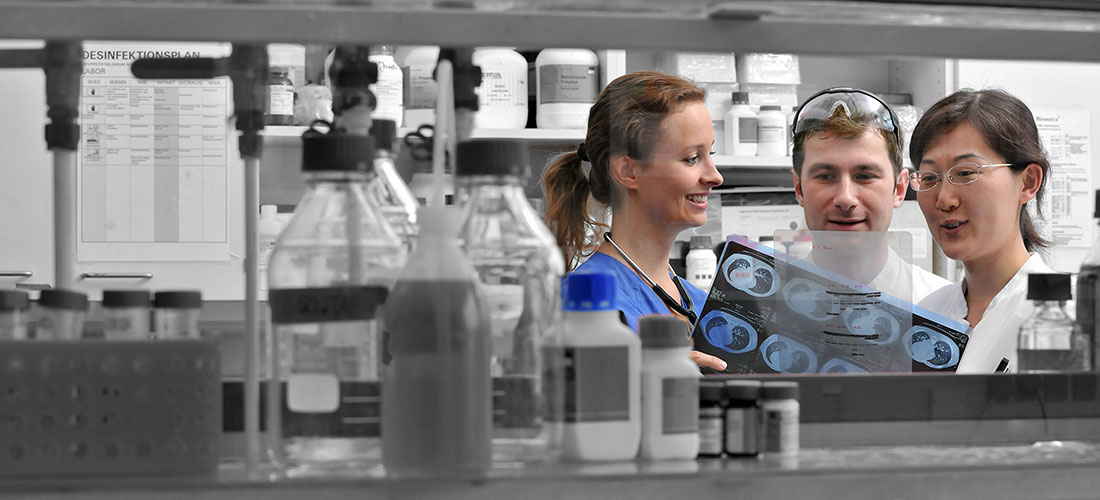
Dear colleagues,
We are delighted to invite you to the Janus Seminar – Cancer meets Regeneration on Monday, 24.4.2023, at 16.00, in the Auditorium of the Cranach House (Föhrer Str. 15, CVK).
The Janus seminar is a new joint seminar series of the Berlin School of Integrative Oncology (BSIO) and the Berlin School of Regenerative Therapies (BSRT). The first edition of the seminar will focus on the common mechanisms between cancer development and regeneration processes, presented by Doug Winton and Robert F Schwabe.
We are looking forward to your participation!
The organizing team
Kimberly, Hristiana, Tomislav and Paul

Doug Winton
Age related mutational burden and cancer priming in colonic epithelium
The overarching aim of the lab is to understand how the biology that acts to maintain intestinal stem cells relates to the risk of developing colorectal cancers. Building on the discovery over twenty-five years ago that the proliferative glands or crypts that support the epithelial lining are iteratively monoclonal in the adult tissue, we determined that this arose from stochastic renewal of equipotent stem cells undergoing symmetric cell divisions. This emphasises that the constancy in stem cell numbers that characterises homeostasis is maintained by continual stem cell turnover throughout life. The use of lineage tracing strategies, that mark individual cells and the clones that they give rise to, allows this process to be described in quantitative terms. Stem cells compete for limited space within each crypt in a ‘neutral drift’ process that results in clones expanding and shrinking over time until they become either extinct or permanently fixed by occupying the whole gland. Further homeostatic expansion of clones is facilitated by infrequent crypt replication or fission. This defines that the age- related footprint of somatic variants within the colonic epithelium is dictated by a bipartite natural process of clone fixation and crypt fission both of which can be exploited by advantaged mutations to result in overrepresentation in both the number and size of their derived clones. Although such behaviours are not specific to oncogenic events some cancer drivers, such as activating mutations of Kras are particularly potent in this regard. A consequence is that the normal colonic epithelium acquires a mosaic nature with age in which cancer driver events become frequent and their progression into outright cancers rare. To evaluate the significance of these observations we are determining which secondary events enable neoplastic transformation and the efficiency with which they do so using mouse models.
Robert F. Schwabe
Stellate cells in liver regeneration and cancer – Dr. Jekyll and Mr. Hyde
The liver is known for its astounding regenerative ability. At the same time, chronic liver injury may lead to the development of hepatocellular carcinoma, the 4th leading cause of cancer-associated mortality world-wide. To understand the role of hepatic stellate cells, the liver-resident fibroblasts in these processes, we applied a wide range of genetic approaches to manipulate this cell type and test effects on liver homeostasis, regeneration and cancer. Genetic depletion demonstrated that hepatic stellate cells promoted both liver cancer development and regeneration. Through genetic depletion and knockout of specific mediators in hepatic stellate cells, we also demonstrated that stellate cells regulated epithelial injury and proliferation. Single cell RNA-seq analysis and conditional deletion of select mediators the existence of cytokine-enriched hepatic stellate cells (cyHSCs), that expressed high levels of HGF, and myofibroblastic hepatic stellate cells (my HSCs), that expressed high levels of type I collagen. The ratio of these two cell types determines the balance between protection from injury (mediated by cyHSCs) and promotion of carcinogenesis (mediated by myHSCs). Follow-up studies suggest that several stellate cell-derived growth factors mediate the crosstalk to hepatocytes in homeostasis, regeneration and cancer development. In summary, our data suggest that fibroblast population like hepatic stellate cells mediate protective responses in homeostasis and acute injury and that the balance may shift towards disease promotion and cancer when injury become chronic. Reversing the balance from type I collagen-expressing myHSCs to HGF-expressing cyHSCs may provide a therapeutic approach to liver cancer and possibly restoration towards hepatic homeostasis.



